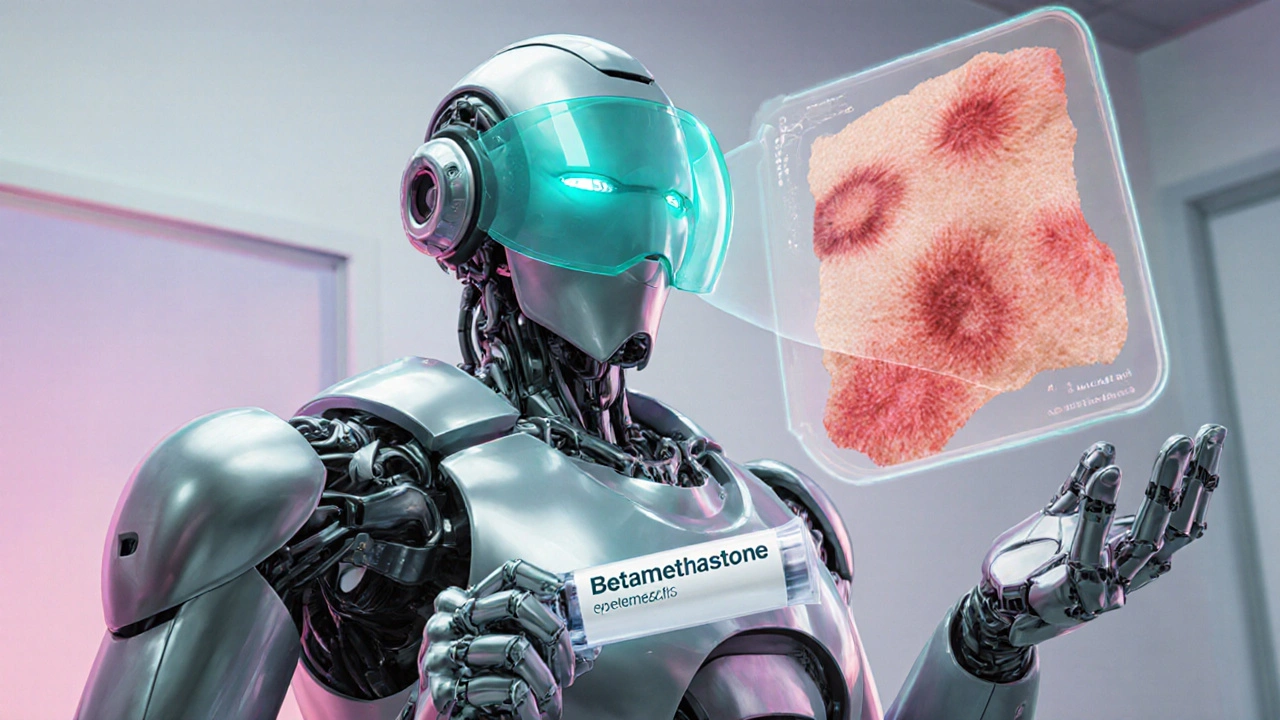Topical Steroids: Uses, Potency Levels, and Safe Application Guide
When talking about topical steroids, medicines applied to the skin to reduce inflammation and itching. Also called corticosteroids, synthetic versions of the body’s own hormone cortisol, they are the go‑to option for many skin flare‑ups. You’ll also hear about hydrocortisone, a low‑potency steroid often sold over the counter, which is great for mild rashes.
How Potency Shapes Treatment
Topical steroids come in a potency ladder from weak (like hydrocortisone 1%) to super‑strong (such as clobetasol). The rule of thumb: milder potency for sensitive areas—face, groin, skin folds—and higher potency for thick skin on elbows, knees, or scalp. Choosing the right strength matters because over‑use can thin the skin, cause stretch marks, or suppress the body’s natural hormone production. For chronic conditions like psoriasis, a fast‑growing skin disease with red plaques, dermatologists often pair a medium‑potency steroid with a vitamin D analog to boost effectiveness while limiting side effects.
Another frequent foe is dermatitis, inflamed skin that can be allergic or irritant in nature. Here, a short course of a mid‑potency steroid can calm the flare, then a switch to a lower‑potency or steroid‑free moisturizer keeps the skin barrier strong. The skin barrier itself is an essential concept: it protects against moisture loss and irritants. Using a steroid without a barrier‑repair cream can leave skin vulnerable, especially after the steroid is stopped.
Safety isn’t just about potency. Timing and coverage area matter too. Applying a thin layer—often described as a “fingertip unit” (the amount that fits on the tip of an adult’s index finger)—prevents excess absorption. For children, the dose is even smaller, and many pediatric guidelines recommend limiting use to two weeks, then reassessing. Systemic absorption is rare with low‑potency steroids, but high‑potency agents applied over large body surfaces can enter the bloodstream, potentially affecting blood sugar or blood pressure.
In practice, you’ll see a mix of prescription and over‑the‑counter options across our article collection. Some posts compare brand‑name high‑potency steroids to generic alternatives, while others dive into the risks of mixing steroids with other topical treatments like retinoids or antifungals. Below, you’ll find practical guides, side‑by‑side comparisons, and safety checklists that help you pick the right product, avoid common pitfalls, and manage your skin condition confidently.
- October
20
2025 - 5
Managing Skin Thinning When Using Betamethasone: Practical Tips
Learn how to prevent and manage skin thinning while using betamethasone. Get practical tips, monitoring advice, and treatment options for safe steroid use.
Read More